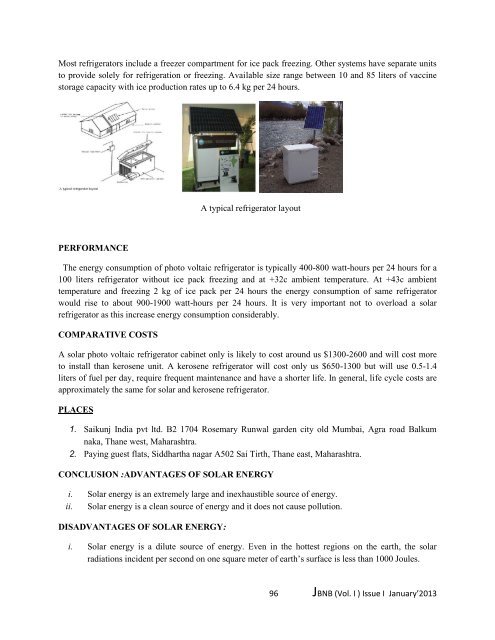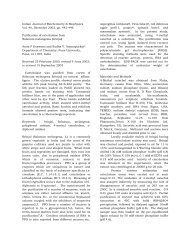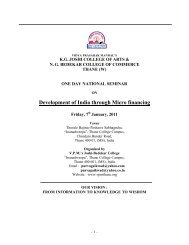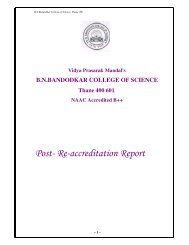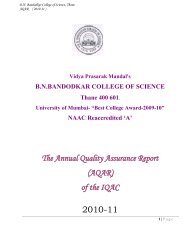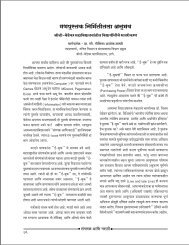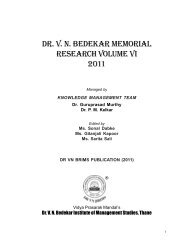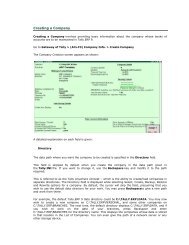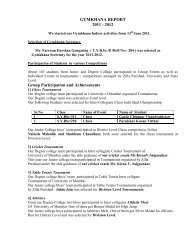J-BNB - VPMThane.org
J-BNB - VPMThane.org
J-BNB - VPMThane.org
Create successful ePaper yourself
Turn your PDF publications into a flip-book with our unique Google optimized e-Paper software.
Most refrigerators include a freezer compartment for ice pack freezing. Other systems have separate units<br />
to provide solely for refrigeration or freezing. Available size range between 10 and 85 liters of vaccine<br />
storage capacity with ice production rates up to 6.4 kg per 24 hours.<br />
A typical refrigerator layout<br />
PERFORMANCE<br />
The energy consumption of photo voltaic refrigerator is typically 400-800 watt-hours per 24 hours for a<br />
100 liters refrigerator without ice pack freezing and at +32c ambient temperature. At +43c ambient<br />
temperature and freezing 2 kg of ice pack per 24 hours the energy consumption of same refrigerator<br />
would rise to about 900-1900 watt-hours per 24 hours. It is very important not to overload a solar<br />
refrigerator as this increase energy consumption considerably.<br />
COMPARATIVE COSTS<br />
A solar photo voltaic refrigerator cabinet only is likely to cost around us $1300-2600 and will cost more<br />
to install than kerosene unit. A kerosene refrigerator will cost only us $650-1300 but will use 0.5-1.4<br />
liters of fuel per day, require frequent maintenance and have a shorter life. In general, life cycle costs are<br />
approximately the same for solar and kerosene refrigerator.<br />
PLACES<br />
1. Saikunj India pvt ltd. B2 1704 Rosemary Runwal garden city old Mumbai, Agra road Balkum<br />
naka, Thane west, Maharashtra.<br />
2. Paying guest flats, Siddhartha nagar A502 Sai Tirth, Thane east, Maharashtra.<br />
CONCLUSION :ADVANTAGES OF SOLAR ENERGY<br />
i. Solar energy is an extremely large and inexhaustible source of energy.<br />
ii. Solar energy is a clean source of energy and it does not cause pollution.<br />
DISADVANTAGES OF SOLAR ENERGY:<br />
i. Solar energy is a dilute source of energy. Even in the hottest regions on the earth, the solar<br />
radiations incident per second on one square meter of earth‘s surface is less than 1000 Joules.<br />
96 J<strong>BNB</strong> (Vol. I ) Issue I January’2013


